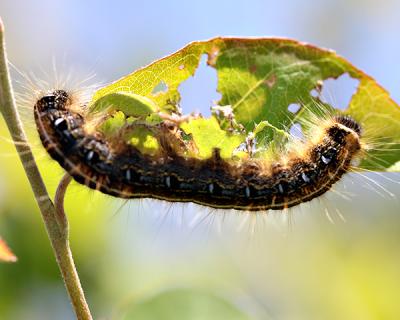Nature Notes: Want Butterflies? Go Native

It’s the peak of the breeding season for almost every bird, mammal, reptile, amphibian, and fish, not to mention shellfish and crustaceans. It’s also the middle of the landscaping and gardening season, when lots are being cleared, new houses constructed, lawns planted with exotic shrubs, trees, and forms. There is the usual concern for protecting the new foliage from destructive insects and deer. Fences are constructed and the usual assortment of insecticides and repellents are applied. Will they work? That is the question of the moment.
We know the vegan insects and the deer are used to the stuff that has been growing around for years, so they might opt for exotics. So you might think that the local colorful butterflies and maybe a hummingbird or two would also be attracted to such trees and shrubs.
Say you add some exquisite species from abroad, e.g. the kousa dogwood, rather than our local flowering dogwood. Will your predictions bear fruit? Will you get butterflies and multihued warblers during the day and pretty moths and electric fireflies at night? You might be surprised to learn that you probably won’t. An entomologist with a flair for botany recently completed a multiyear study showing that natives are far superior to exotics with respect to attracting insects and serving as nest sites for native birds that feed on those insects.
Douglas W. Tallamy has counted by species the different caterpillars that habituate 205 different species of northeastern native tree and shrubs. The locals far outshine the introduced trees and shrubs. Native oaks are host to 557 different caterpillar species. Only a few of them, like the foreign-born gypsy moths, are destructive. Next come the black cherries and beach plums, which host 456 different caterpillars, then the North American willows with 455 different ones.
The introduced butterfly bush, buddleia, touted throughout the world as a butterfly attractant, has only one host caterpillar. Surprised? The Chinese parasol tree may support a host of different caterpillars in China, but here, not a one! No fewer than 34 exotic landscape plants fail to support a single caterpillar species, while another 25 support one each, and 15 supply food and comfort for only two.
What’s going on? Well, it seems that regional floras and the native insects they host evolve together. If we imported more of the foreign insect species (we already have far too many) that evolved with say trees-of-heaven, heavenly bamboo, or Japanese snowbells in their native lands, it would be a different story. Most of the insects that are harmful to our local trees and shrubs came from foreign habitats where they evolved to become benign to their floral neighbors and hosts, but here, as with the Japanese beetle and European gypsy moth, they munch away without stopping. It’s the McDonald’s rule, but working in reverse. Start a McDonald’s in Russia or Japan and everybody comes to eat in it.
Those homeowners who enjoy birds might be surprised to find that they will attract many more breeding species with their native flora than with the exotic stuff. On the other hand, deer often prefer the exotics to the natives.
If you doubt my remarks concerning the difference in number between native and exotic flora insect populations, pick up a copy of “Bringing Nature Home: How You Can Sustain Wildlife With Native Plants” by Douglas W. Tallamy, and published by Timber Press. You will be as surprised as I was when I heard Mr. Tallamy speak at a “Native Plants in Landscaping” conference at Millersville University in Lancaster, Pa., and read his book this past week. When I got home I counted the natives in my yard: four different oaks, black cherries and beach plums, flowering dogwoods, and a bunch more. I also have several exotics. I plan to do my own survey throughout the rest of spring and summer.
Larry Penny can be reached via email at [email protected].
